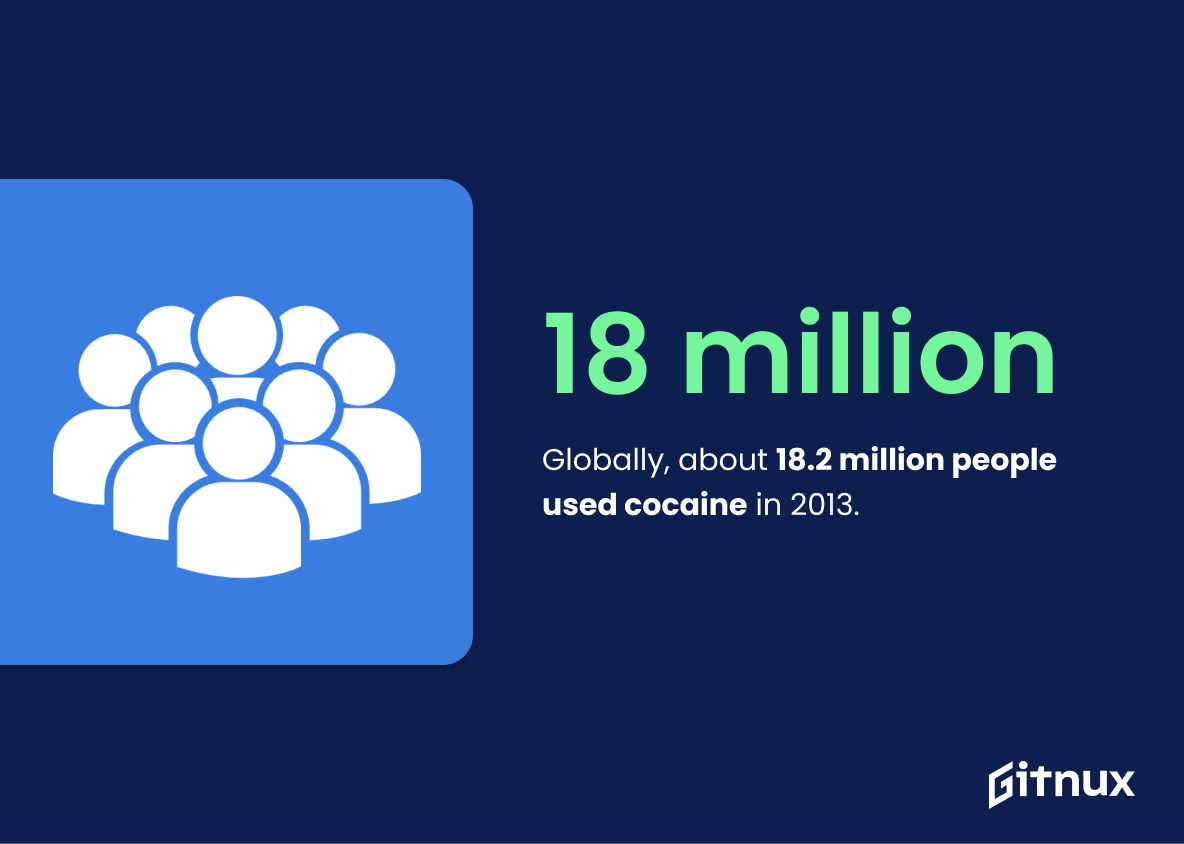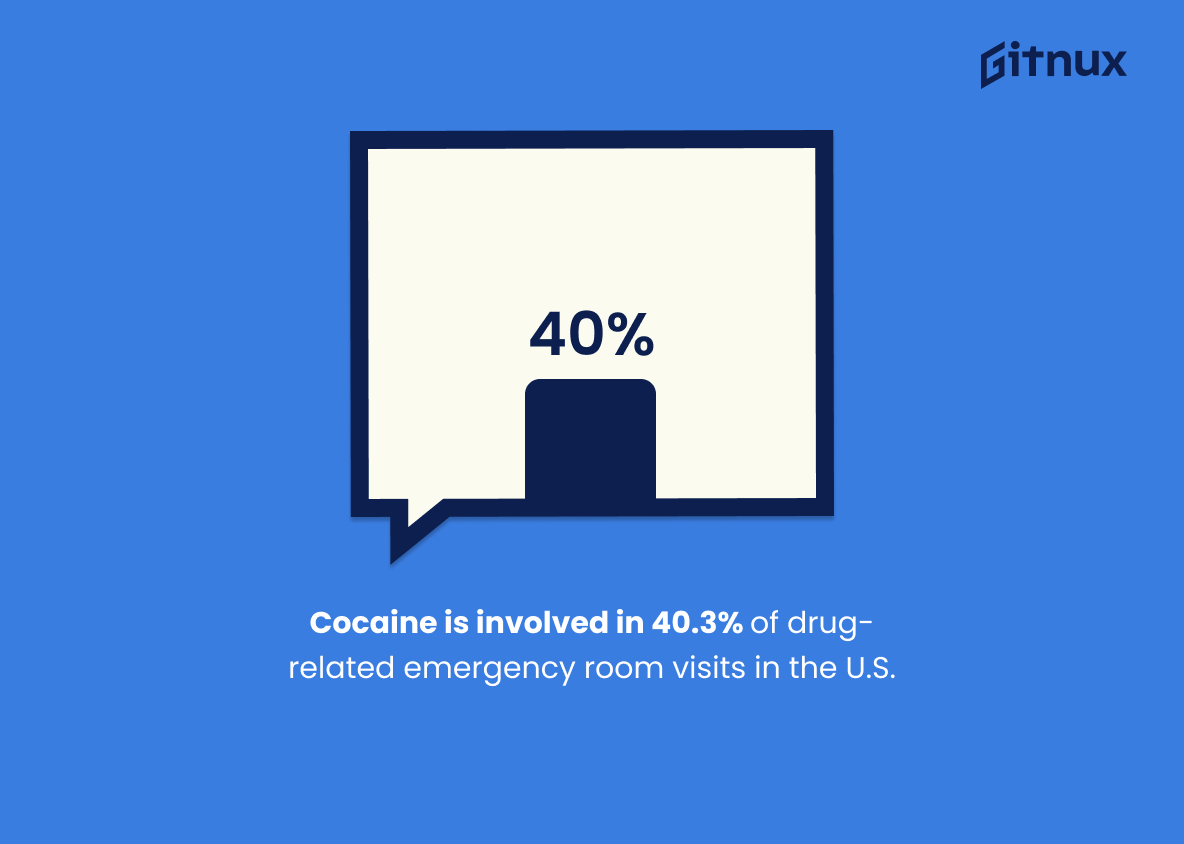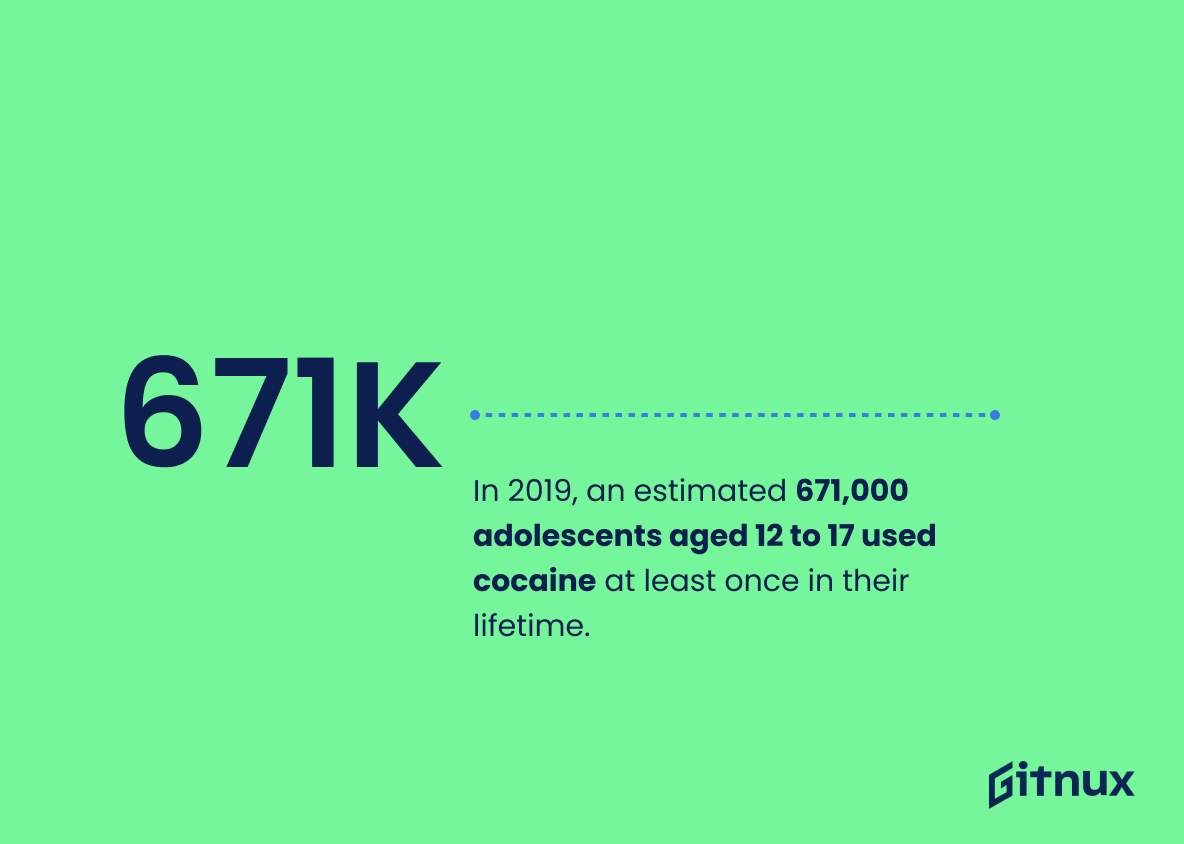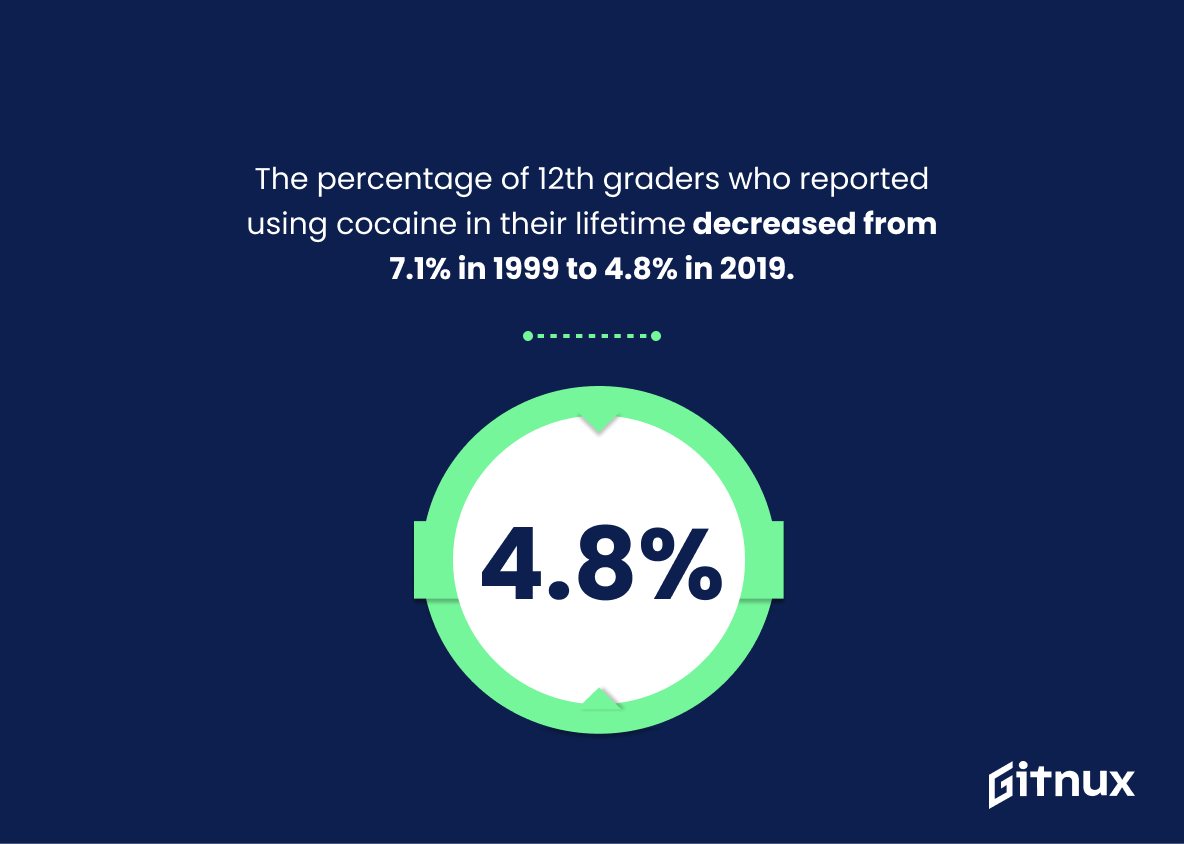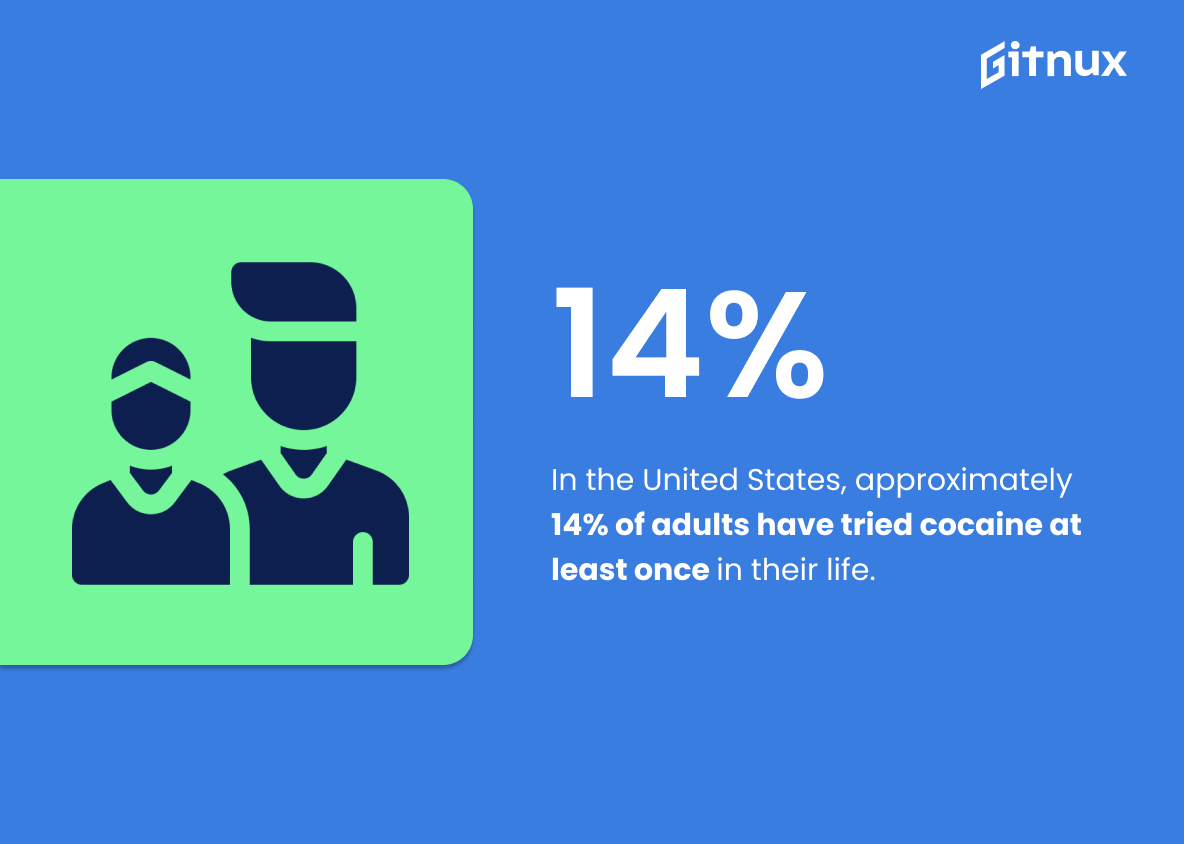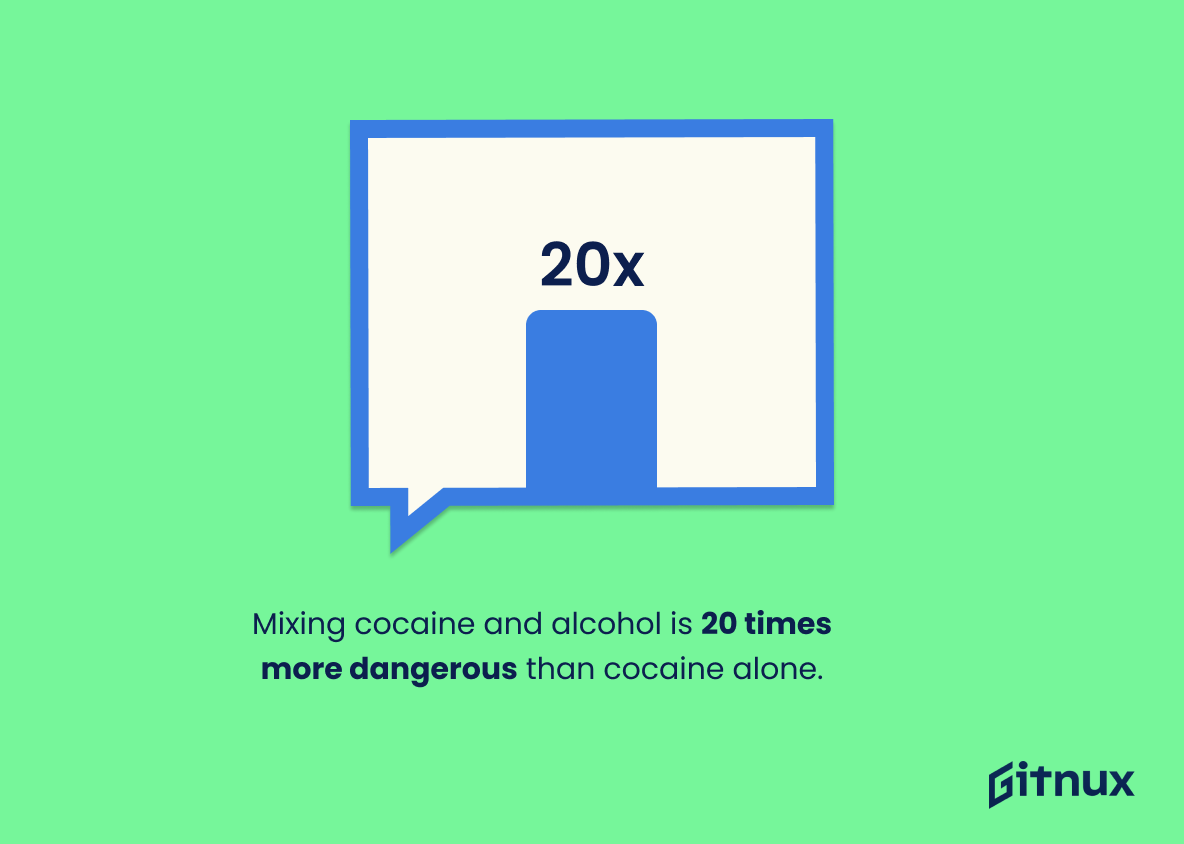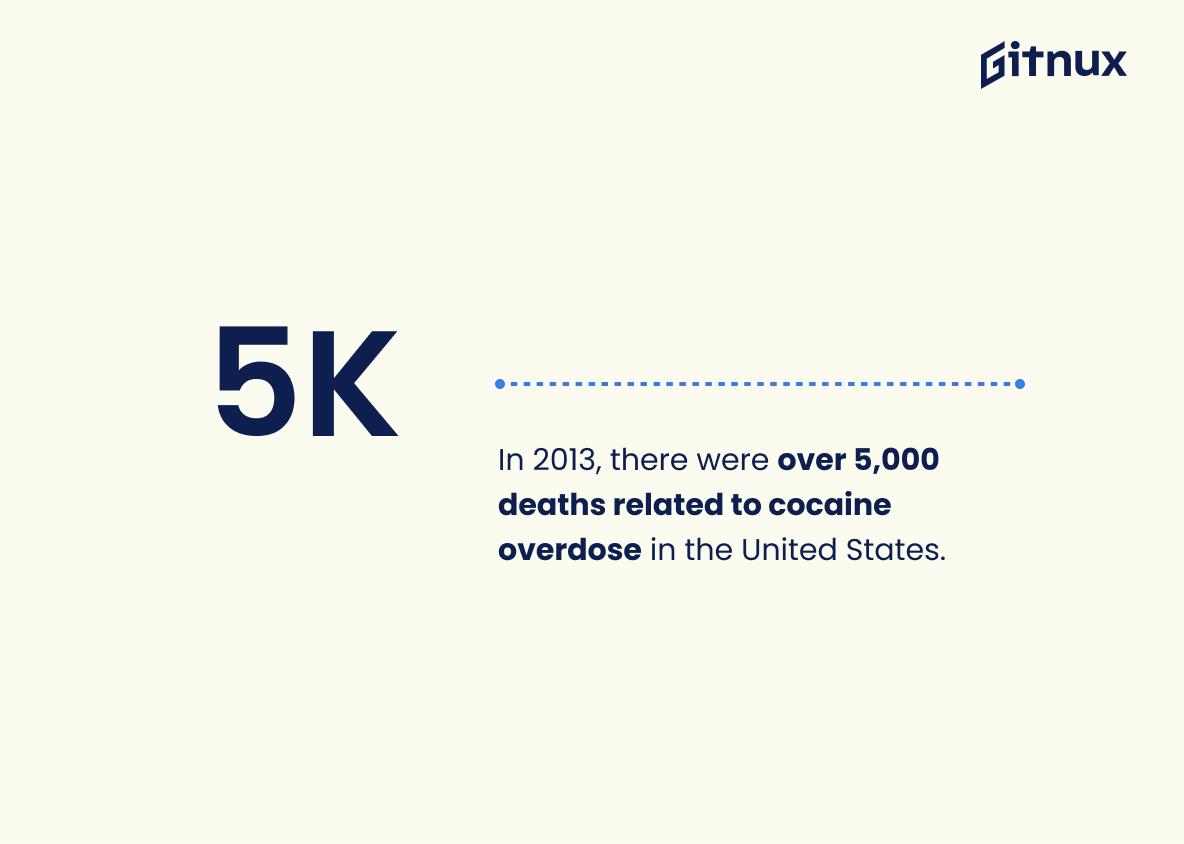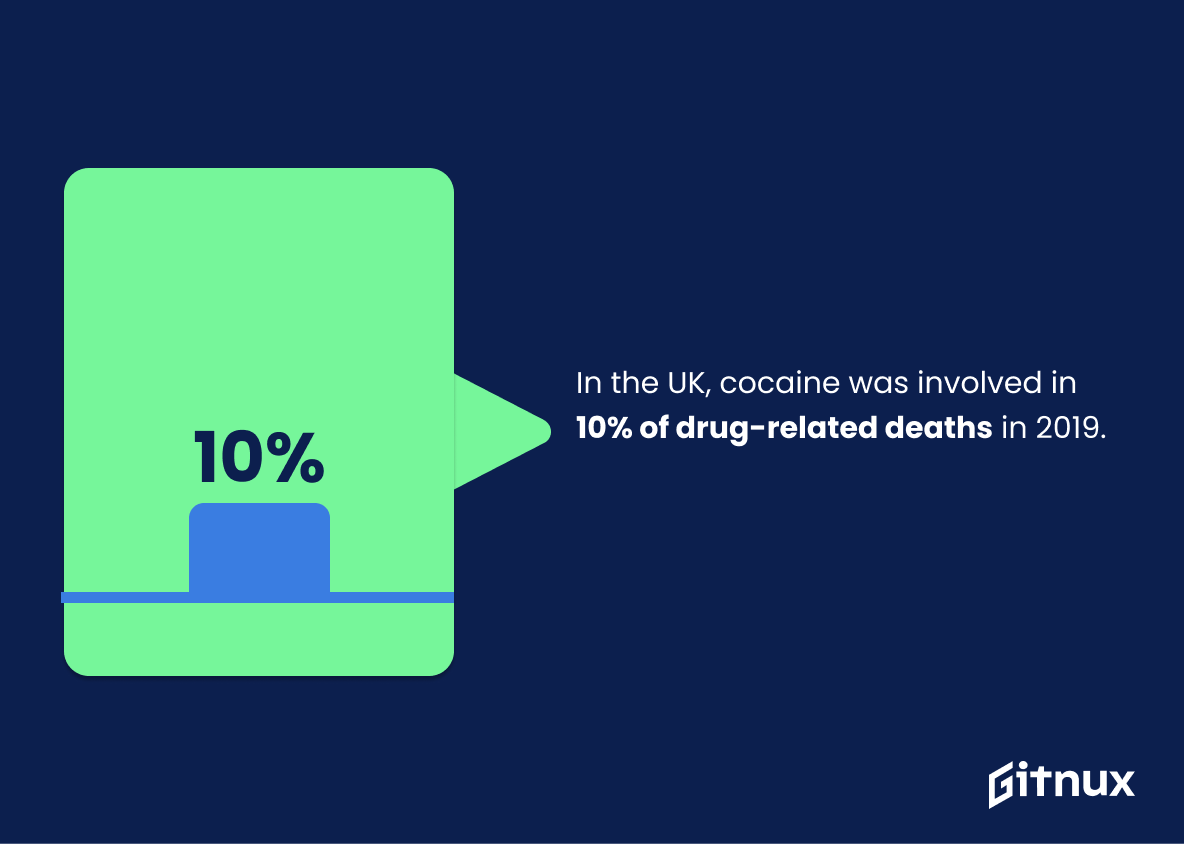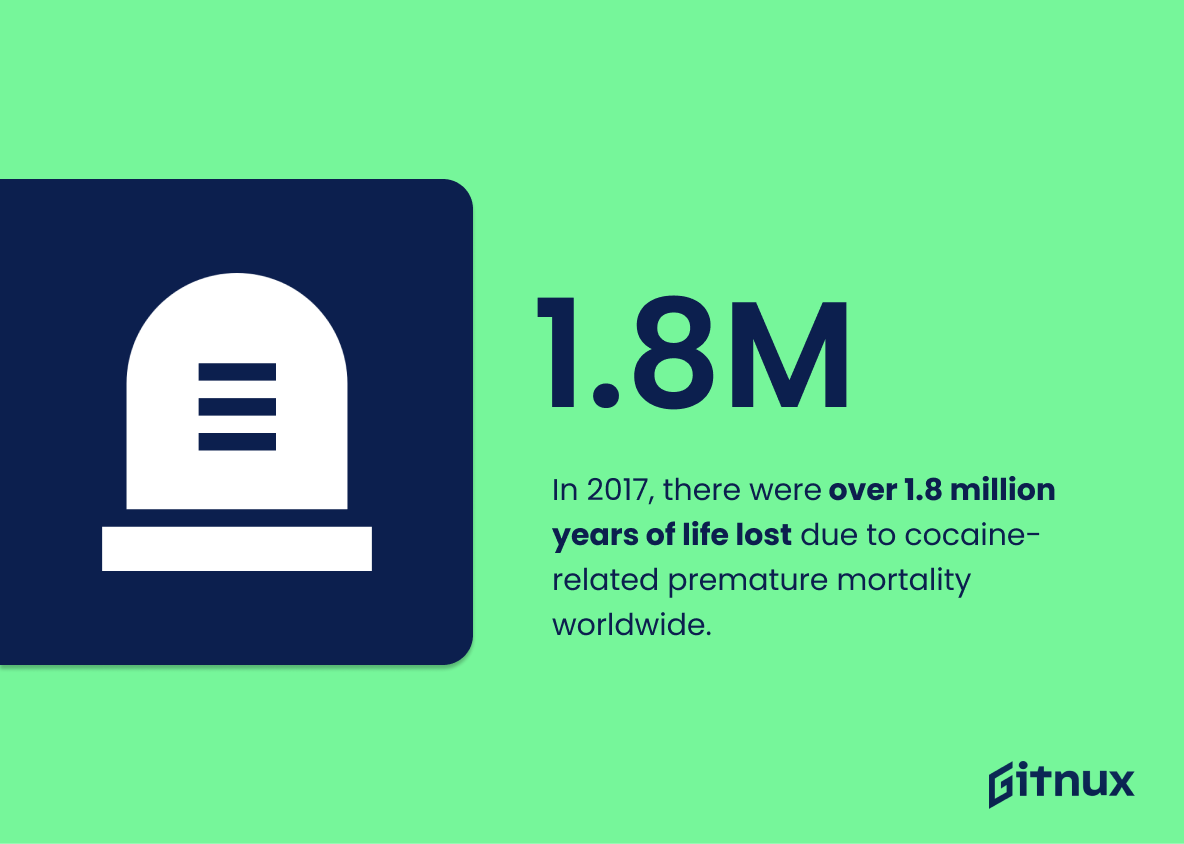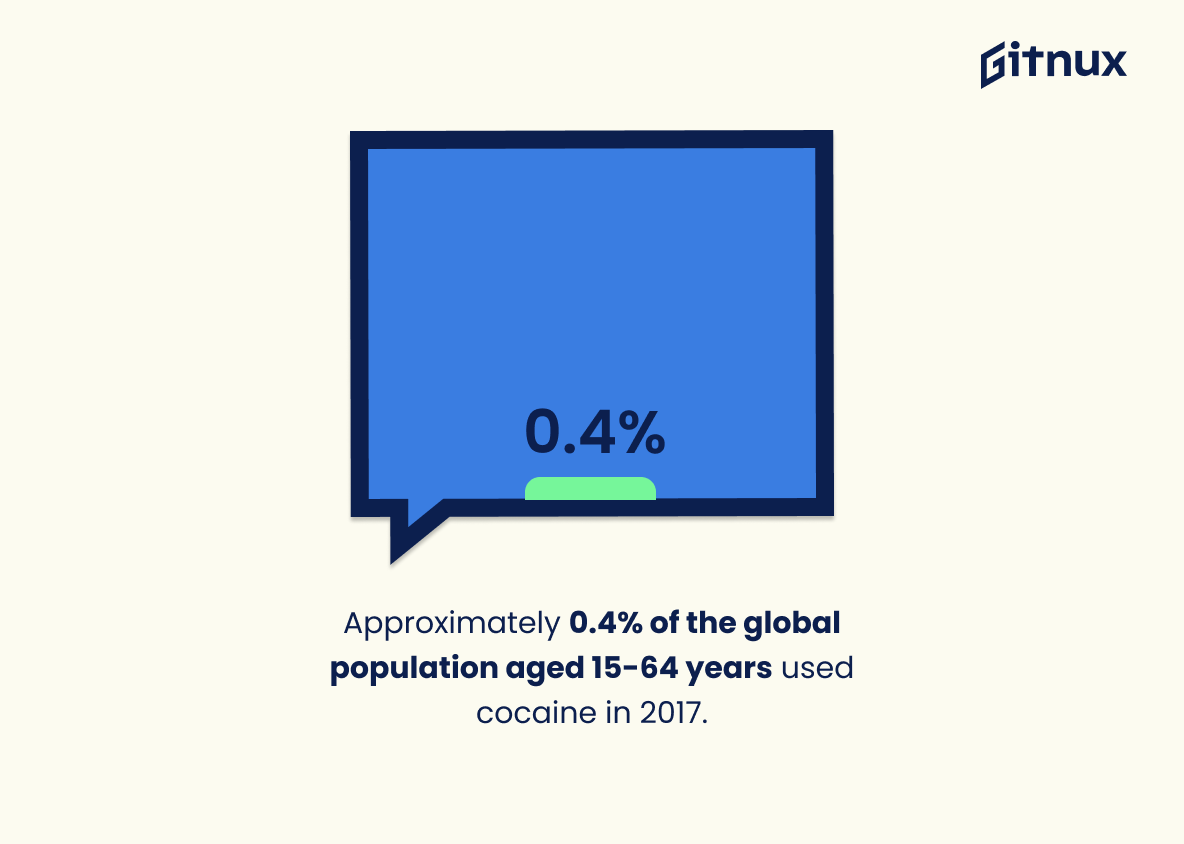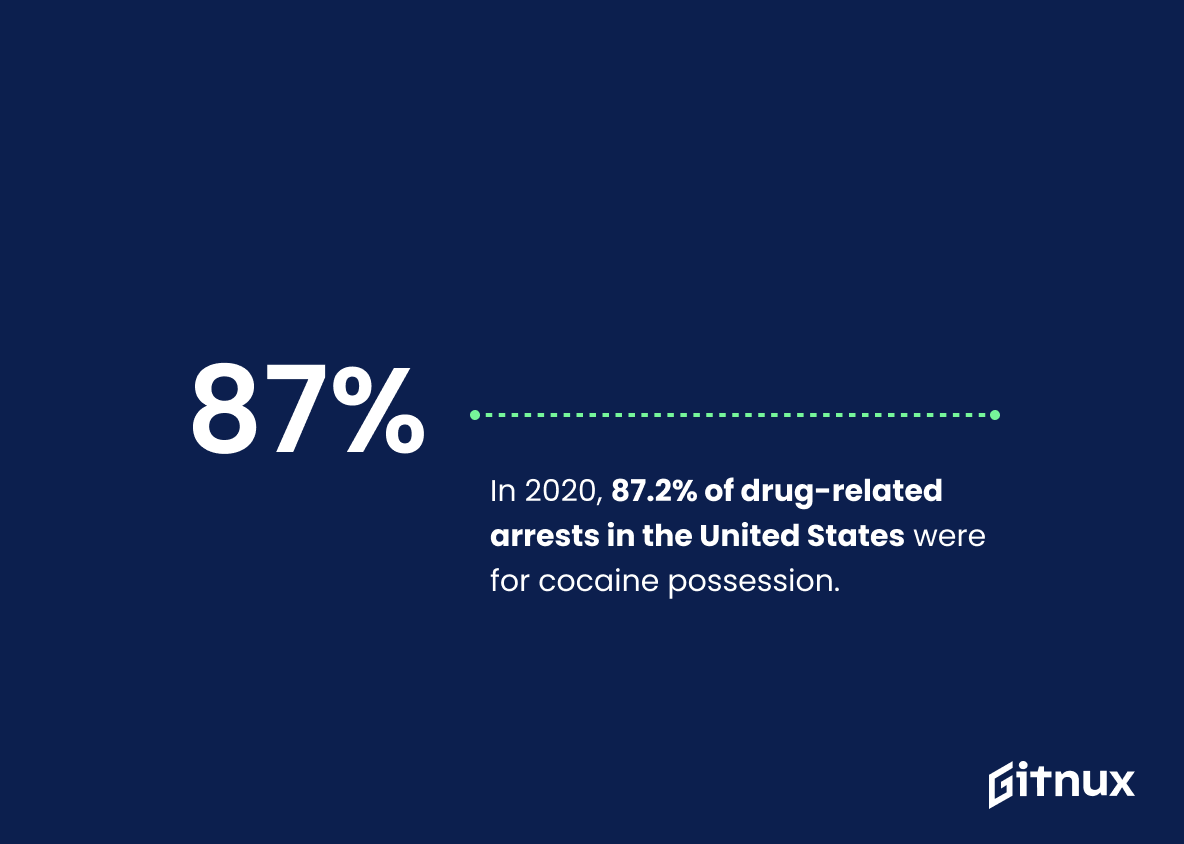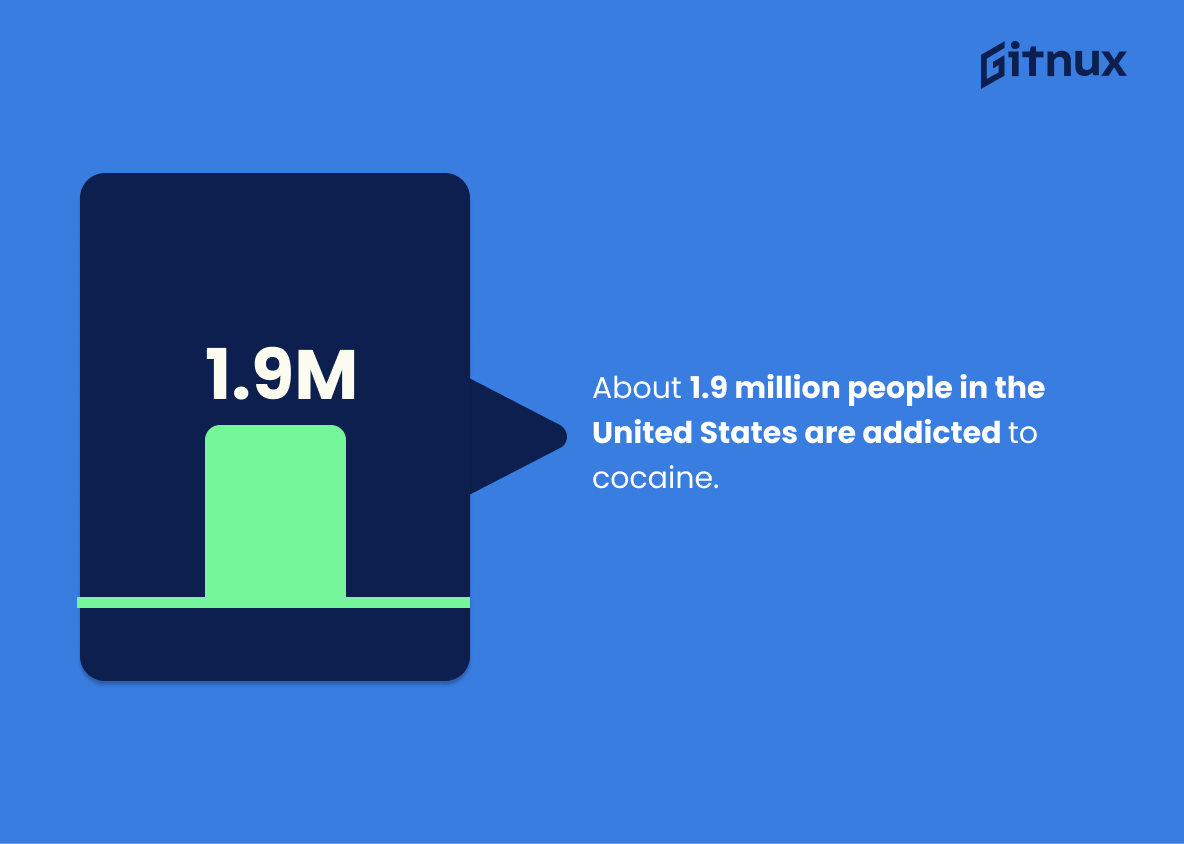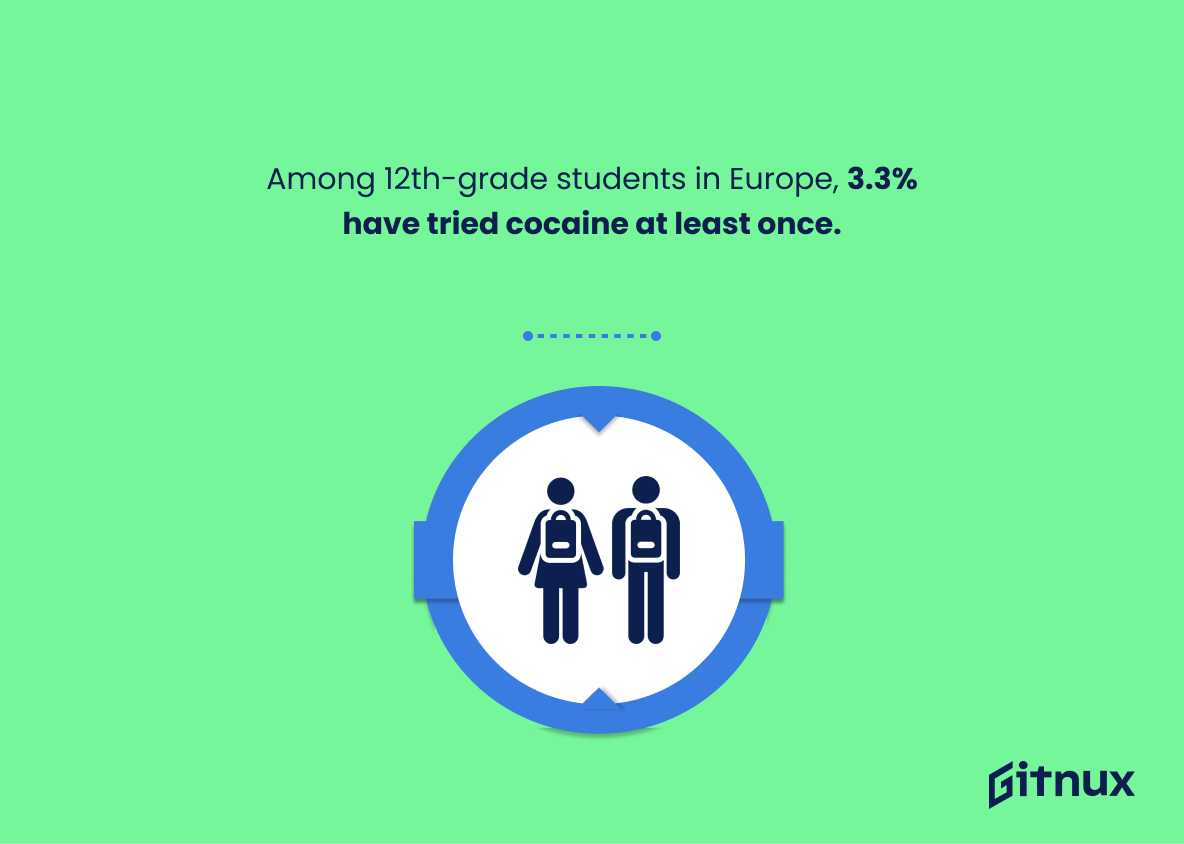Cocaine is a powerful and highly addictive stimulant drug that has been used for centuries. Despite its long history, the use of cocaine continues to be an issue in many countries around the world today. In this blog post, we will explore some of the most recent statistics on cocaine addiction from various sources across different regions.
We’ll start by looking at data from the United States: Approximately 5.5 million Americans (aged 12 or older) reported using cocaine in the past year; Cocaine-related overdose deaths have increased by 29% annually since 2013; Cocaine is involved in 40.3% of drug-related emergency room visits; 671,000 adolescents aged 12 to 17 used cocaine at least once in their lifetime; 10% of people who try cocaine become addicted; 7.1% of 12th graders reported using it 1999 compared with 4.8 %in 2019 and 14 %of adults have tried it at least once during their life time . We can also see that combining alcohol with cocain increases health risks 20 times more than just taking coacine alone..
Globally, about 18 million people were estimated to have used coacine back in 2013 according to one study while another found that 0 .4 percent global population aged 15 – 64 years had taken it 2017 , which was followed up by 1 .9 million US citizens being addicted as well as 3 .3 percent European high school seniors having tried it out too .. South Africa saw an increase from 4 8 per cent 2000 11 2 per cent 2017 when measuring those seeking treatment for abuse . Finally there were over 5000 deaths related due ocoacine overdose USA 2013 plus 10 percent UK’s total drugs related death rate 2019 respectively ..
In conclusion, these statistics show us how widespread and dangerous substance abuse involving cocainecan be both within our own country and abroad – highlighting why prevention efforts are so important.
This statistic is a stark reminder of the prevalence of cocaine use in the United States. It is a sobering reminder that millions of Americans are engaging in this dangerous behavior, and that the problem of cocaine addiction is far from solved.
Cocaine-related overdose deaths have increased by 29% annually since 2013 in the United States.
This statistic is a stark reminder of the devastating effects of cocaine addiction in the United States. It highlights the urgent need for more effective prevention and treatment strategies to address this growing problem. The increasing number of overdose deaths is a clear indication that the current approach to tackling cocaine addiction is not working and that more needs to be done to protect vulnerable individuals from the dangers of this drug.
Cocaine Addiction Statistics Overview
Globally, about 18.2 million people used cocaine in 2013.
This statistic is a stark reminder of the prevalence of cocaine use around the world. It serves as a reminder that cocaine addiction is a global issue that affects millions of people, and that it is a problem that needs to be addressed.
Cocaine is involved in 40.3% of drug-related emergency room visits in the U.S.
This statistic serves as a stark reminder of the prevalence of cocaine addiction in the United States. It highlights the fact that cocaine is a major contributor to drug-related emergency room visits, and that the issue of cocaine addiction is a serious one that needs to be addressed.
In 2019, an estimated 671,000 adolescents aged 12 to 17 used cocaine at least once in their lifetime.
This statistic is a stark reminder of the prevalence of cocaine use among adolescents. It highlights the need for greater awareness and education about the dangers of cocaine use, as well as the need for more effective prevention and treatment programs for those struggling with addiction.
Approximately 10% of people who try cocaine will become addicted.
This statistic is a powerful indicator of the potential risks associated with cocaine use. It serves as a reminder that even a single use of cocaine can lead to addiction, and that the consequences of addiction can be severe. By highlighting this statistic, a blog post about Cocaine Addiction Statistics can help to raise awareness of the dangers of cocaine use and encourage people to make informed decisions about their drug use.
The percentage of 12th graders who reported using cocaine in their lifetime decreased from 7.1% in 1999 to 4.8% in 2019.
This statistic is a testament to the progress that has been made in the fight against cocaine addiction. It shows that the efforts of those working to reduce the prevalence of cocaine use have been successful, and that the public is becoming more aware of the dangers of this drug. This is an encouraging sign that the tide is turning against cocaine addiction, and that more people are making the right choices when it comes to their health and well-being.
In the United States, approximately 14% of adults have tried cocaine at least once in their life.
This statistic serves as a stark reminder of the prevalence of cocaine use in the United States. It highlights the fact that a significant portion of the population has been exposed to the drug, and thus, is at risk of developing an addiction. This statistic is an important piece of the puzzle when it comes to understanding the scope of the cocaine addiction problem in the United States.
People who combine cocaine and alcohol are 20 times more likely to develop severe health problems than those who only use cocaine.
This statistic is a stark reminder of the dangers of combining cocaine and alcohol. It highlights the fact that the risks of using these two substances together are far greater than the risks of using either one alone. This is an important point to consider when discussing cocaine addiction statistics, as it emphasizes the need for individuals to be aware of the potential consequences of combining these two substances.
In 2013, there were over 5,000 deaths related to cocaine overdose in the United States.
This statistic is a stark reminder of the devastating effects of cocaine addiction in the United States. It serves as a powerful reminder of the need for increased awareness and prevention efforts to reduce the number of deaths related to cocaine overdose. It also highlights the importance of providing support and resources to those struggling with cocaine addiction.
In the UK, cocaine was involved in 10% of drug-related deaths in 2019.
This statistic is a stark reminder of the devastating effects of cocaine addiction. It highlights the fact that cocaine is a dangerous drug that can have fatal consequences, and that it is a major contributor to drug-related deaths in the UK. This statistic is a powerful reminder of the need for greater awareness and prevention of cocaine addiction.
Cocaine use among high school seniors in the United States has remained relatively stable, with 2.2% reporting past-month use in 2020.
This statistic is a crucial indicator of the prevalence of cocaine use among high school seniors in the United States, providing a valuable insight into the current state of the issue. It serves as a benchmark for understanding the scope of the problem and can be used to measure the effectiveness of prevention and intervention efforts. Furthermore, it can help inform policy decisions and provide a better understanding of the potential risks associated with cocaine use.
In 2017, there were over 1.8 million years of life lost due to cocaine-related premature mortality worldwide.
This statistic is a stark reminder of the devastating impact that cocaine addiction can have on individuals and communities around the world. It highlights the urgent need for greater awareness and prevention of cocaine addiction, as well as improved access to treatment and support for those affected.
Approximately 0.4% of the global population aged 15-64 years used cocaine in 2017.
This statistic is a stark reminder of the prevalence of cocaine use in the world today. It highlights the fact that even though the number of people using cocaine is relatively small, it is still a significant issue that needs to be addressed. It also serves as a warning to those who may be considering using cocaine, as it shows that the risks associated with it are real and should not be taken lightly.
Treatment admissions for cocaine use increased by 33% in Europe between 2014 and 2017.
This statistic is a stark reminder of the growing prevalence of cocaine addiction in Europe. It highlights the urgent need for more effective prevention and treatment strategies to address this growing problem. The 33% increase in treatment admissions for cocaine use between 2014 and 2017 is a clear indication that the issue of cocaine addiction is not going away anytime soon.
In 2020, 87.2% of drug-related arrests in the United States were for cocaine possession.
This statistic serves as a stark reminder of the prevalence of cocaine possession in the United States. It highlights the need for greater awareness and education about the dangers of cocaine addiction, as well as the need for more effective prevention and treatment strategies.
About 1.9 million people in the United States are addicted to cocaine.
This statistic is a stark reminder of the devastating impact that cocaine addiction has had on the lives of millions of people in the United States. It serves as a powerful reminder of the need for greater awareness and prevention efforts to help reduce the prevalence of this dangerous addiction.
Among 12th-grade students in Europe, 3.3% have tried cocaine at least once.
This statistic serves as a stark reminder of the prevalence of cocaine use among 12th-grade students in Europe. It highlights the need for greater awareness and education about the dangers of cocaine use, as well as the need for more effective prevention and intervention strategies to reduce the number of young people experimenting with this dangerous drug.
Conclusion
The statistics presented in this blog post demonstrate the prevalence of cocaine use and addiction around the world. In the United States, approximately 5.5 million people reported using cocaine in the past year, while globally 18.2 million people used it in 2013. Cocaine-related overdose deaths have increased by 29% annually since 2013 and 40.3% of drug-related emergency room visits are related to cocaine use in America alone; 671,000 adolescents aged 12 to 17 also used it at least once last year according to estimates from 2019 data sources. Additionally, 10% of those who try cocaine become addicted and 1.9 million Americans are currently living with a cocaine addiction today – an alarming statistic that is only increasing as time goes on due to its availability worldwide combined with its highly addictive nature when abused or misused for recreational purposes such as partying or socializing among peers without proper education about potential risks associated with substance abuse disorders like these ones caused by drugs like Cocaine . It is clear that more needs to be done both domestically and internationally regarding prevention efforts against illicit substances such as Cocaine if we want future generations not suffer from similar consequences brought upon us now due solely our lack of knowledge about them before engaging into their consumption habits which can lead up towards severe health problems even death itself.
References
0. – https://www.cdc.gov
1. – https://www.medicalnewstoday.com
2. – https://www.thelancet.com
3. – https://www.emcdda.europa.eu
4. – https://www.addictioncenter.com
5. – https://www.samhsa.gov
6. – https://www.ons.gov.uk
7. – https://www.fbi.gov
8. – https://www.unodc.org
9. – https://www.findrehabcenters.org
10. – https://www.drugabuse.gov
11. – https://www.mdpi.com
12. – https://www.ncbi.nlm.nih.gov
